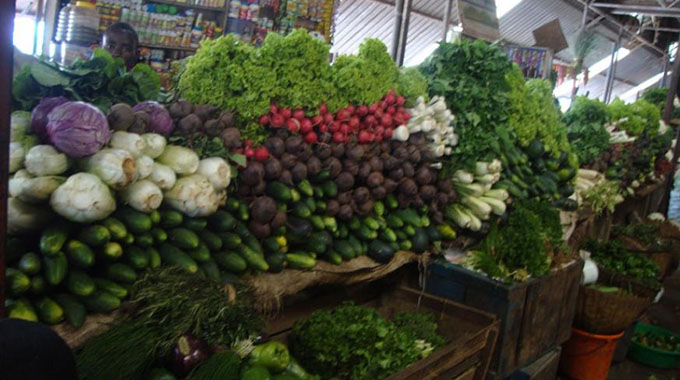June inflation drops to -0,3 percent… pushes economy to deflation
THE month-on-month inflation rate for June 2024 has dropped to -0,3 percent, shedding 0,4 percentage points on the May 2024 rate of 0,1 percent, official data shows. The month-on-month inflation rate is given by the percentage change in the price index of the reference month of a given year compared with the price index of the previous month.
The national statistics agency, ZimStat, said for the month of June 2024, the ZiG consumer prices index (CPI) for food and non-alcoholic beverage had the lowest contribution to the month-on-month change in index (inflation rate) of -0,1 percent followed by alcoholic beverages and tobacco with -0,02 percent. “The month-on-month inflation rate for June 2024, was -0,3 percent, shedding 0,4 percentage points on the May 2024 rate of 0,1 percent,” said the agency.
“The year-on-year inflation rate for the month of June 2024, as measured by the all-items USD Consumer Price Index (CPI), was 3,8 percent.”
This drop in inflation to a negative figure of 0,3 is what is often referred to as deflation, which describes a sustained decrease in the general price level of goods and services, economic analyst, Mr George Nhepera, said.
“In my view, this could be good as it implies that the citizens now have more disposable income with capacity to purchase more goods and services,” he said in an interview. “With regard to business, this can actually make our exports cheaper and competitive and as such boost our exports revenue.”
Another economic analyst, Dr Prosper Chitambara, said having a negative inflation is not good as it points to a weakening aggregate demand in the economy, which is not ideal. “Aggregate demand must increase but in a healthy and sustainable manner so as not to overheat the economy. Deflation points to serious challenges within the economy around the weakening of aggregate demand, which obviously will have implications on consumption and also on investment,” he said.
“Ideal inflation rate should be between zero to 10 percent and not more than 10 percent. Some scholars have done some studies, which have shown that an optimum inflation rate for economy like Zimbabwe should be around seven and eight percent.
“Probably, we are going to see inflation rising in the coming months but a negative or hyperinflation are not ideal situation. We should be able to stabilise inflation in those low levels. That’s where the secret is, stabilising and sustaining stability that’s very critical.”
Following the adoption of the new structured currency, the Zimbabwe Gold (ZiG) in April, inflation has continued to drop as basic goods price and exchange rates stabilised.
Economic players have roundly commended the new currency crediting it for sustaining macro-economic stability being experienced in the economy in the last three months. This demonstrates the Government’s commitment to consolidating domestic economic growth and fostering business viability in the long term.
The Reserve Bank of Zimbabwe (RBZ) introduced ZiG in early April as part of a raft of policy interventions to address exchange rate volatility, curtail inflation and restore macro-economic stability. Backed by precious minerals, mainly gold and a basket of foreign currency reserves, ZiG has remained firm against the US dollar hovering around US$1:ZiG13,5 with more business stakeholders embracing its use.
Economists have applauded the ZiG for taming parallel market volatility whose rates have equally remained stable with a narrow negligible disparity when compared to the official rate. Meanwhile, ZimStat has said the food poverty line (FPL) for one person in June 2024 was ZiG399,83.
Food poverty line represents the amount of money that an individual requires to afford a daily minimum energy intake of 2 100 calories.
The total consumption poverty line (TCPL) for one person in June 2024 was ZiG623,40. The Total Consumption Poverty Line is derived by adding the non-food consumption expenditures of an individual below the FPL. – chronicle











